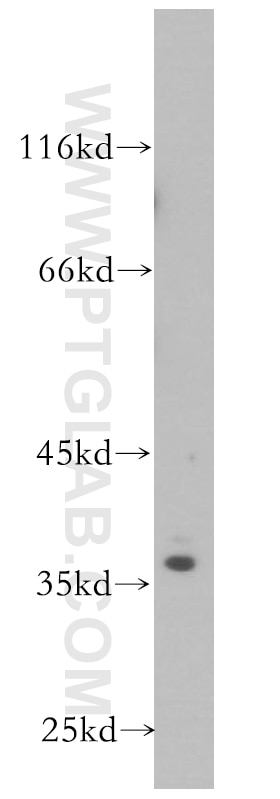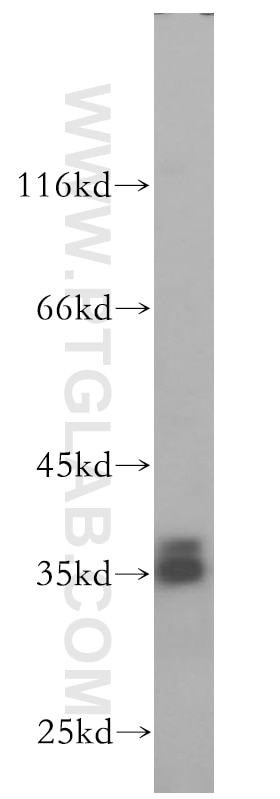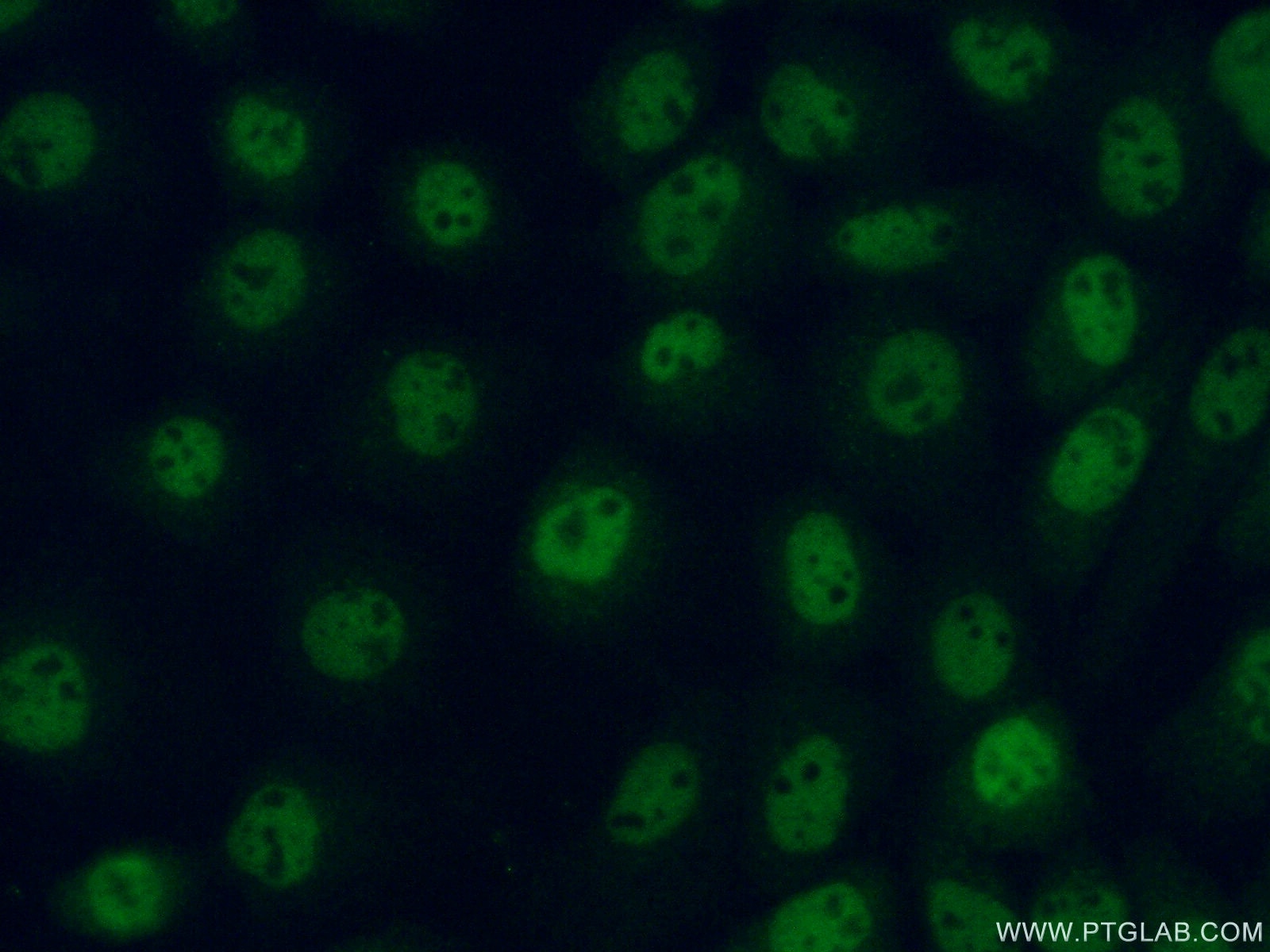SRA1 Polyklonaler Antikörper
SRA1 Polyklonal Antikörper für WB, IF/ICC, ELISA
Wirt / Isotyp
Kaninchen / IgG
Getestete Reaktivität
human und mehr (1)
Anwendung
WB, IHC, IF/ICC, ELISA
Konjugation
Unkonjugiert
Kat-Nr. : 18699-1-AP
Synonyme
Geprüfte Anwendungen
| Erfolgreiche Detektion in WB | A431-Zellen, MCF-7-Zellen |
| Erfolgreiche Detektion in IF/ICC | A431-Zellen |
Empfohlene Verdünnung
| Anwendung | Verdünnung |
|---|---|
| Western Blot (WB) | WB : 1:500-1:1000 |
| Immunfluoreszenz (IF)/ICC | IF/ICC : 1:50-1:500 |
| It is recommended that this reagent should be titrated in each testing system to obtain optimal results. | |
| Sample-dependent, check data in validation data gallery | |
Veröffentlichte Anwendungen
| WB | See 1 publications below |
| IHC | See 1 publications below |
Produktinformation
18699-1-AP bindet in WB, IHC, IF/ICC, ELISA SRA1 und zeigt Reaktivität mit human
| Getestete Reaktivität | human |
| In Publikationen genannte Reaktivität | Maus |
| Wirt / Isotyp | Kaninchen / IgG |
| Klonalität | Polyklonal |
| Typ | Antikörper |
| Immunogen | Peptid |
| Vollständiger Name | steroid receptor RNA activator 1 |
| Berechnetes Molekulargewicht | 26 kDa |
| Beobachtetes Molekulargewicht | 37 kDa |
| GenBank-Zugangsnummer | BC156760 |
| Gene symbol | SRA1 |
| Gene ID (NCBI) | 10011 |
| Konjugation | Unkonjugiert |
| Form | Liquid |
| Reinigungsmethode | Antigen-Affinitätsreinigung |
| Lagerungspuffer | PBS with 0.02% sodium azide and 50% glycerol |
| Lagerungsbedingungen | Bei -20°C lagern. Nach dem Versand ein Jahr lang stabil Aliquotieren ist bei -20oC Lagerung nicht notwendig. 20ul Größen enthalten 0,1% BSA. |
Hintergrundinformationen
Steroid receptor RNA activator 1 (SRA1), also known as seroid receptor RNA activator protein (SRAP) or SRA, is involved in modulating the activity of multiple transcription factors including the estrogen receptor (ER) (PMID: 20398657). It may play a role in tumorigenesis (PMID: 16152589). The SRA1 gene encodes both SRA1 protein and a non-coding functional RNA that functions as part of a ribonucleoprotein complex activating steroid receptor induced transcription.
Protokolle
| PRODUKTSPEZIFISCHE PROTOKOLLE | |
|---|---|
| WB protocol for SRA1 antibody 18699-1-AP | Protokoll herunterladen |
| IF protocol for SRA1 antibody 18699-1-AP | Protokoll herunterladen |
| STANDARD-PROTOKOLLE | |
|---|---|
| Klicken Sie hier, um unsere Standardprotokolle anzuzeigen |
Publikationen
| Species | Application | Title |
|---|---|---|
Atherosclerosis Flagellar hook protein FlgE promotes macrophage activation and atherosclerosis by targeting ATP5B | ||
Transl Neurodegener Nanotechnology for microglial targeting and inhibition of neuroinflammation underlying Alzheimer's pathology |




